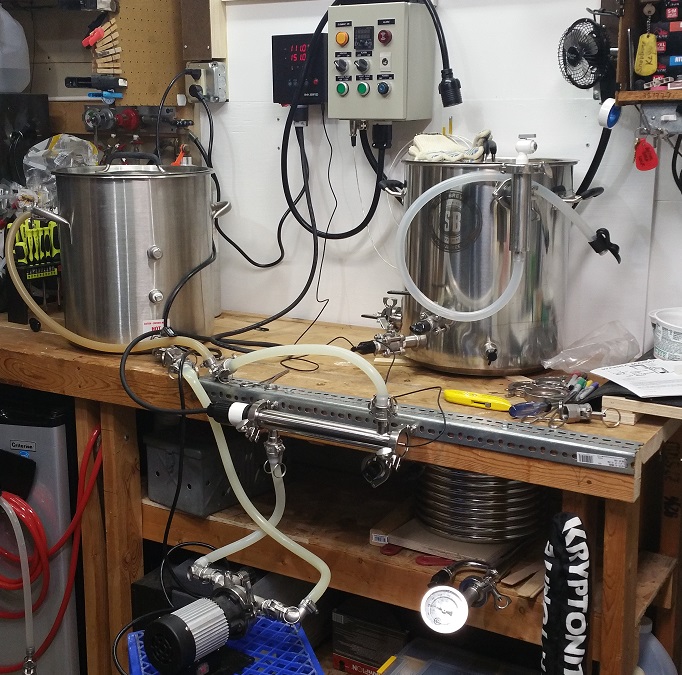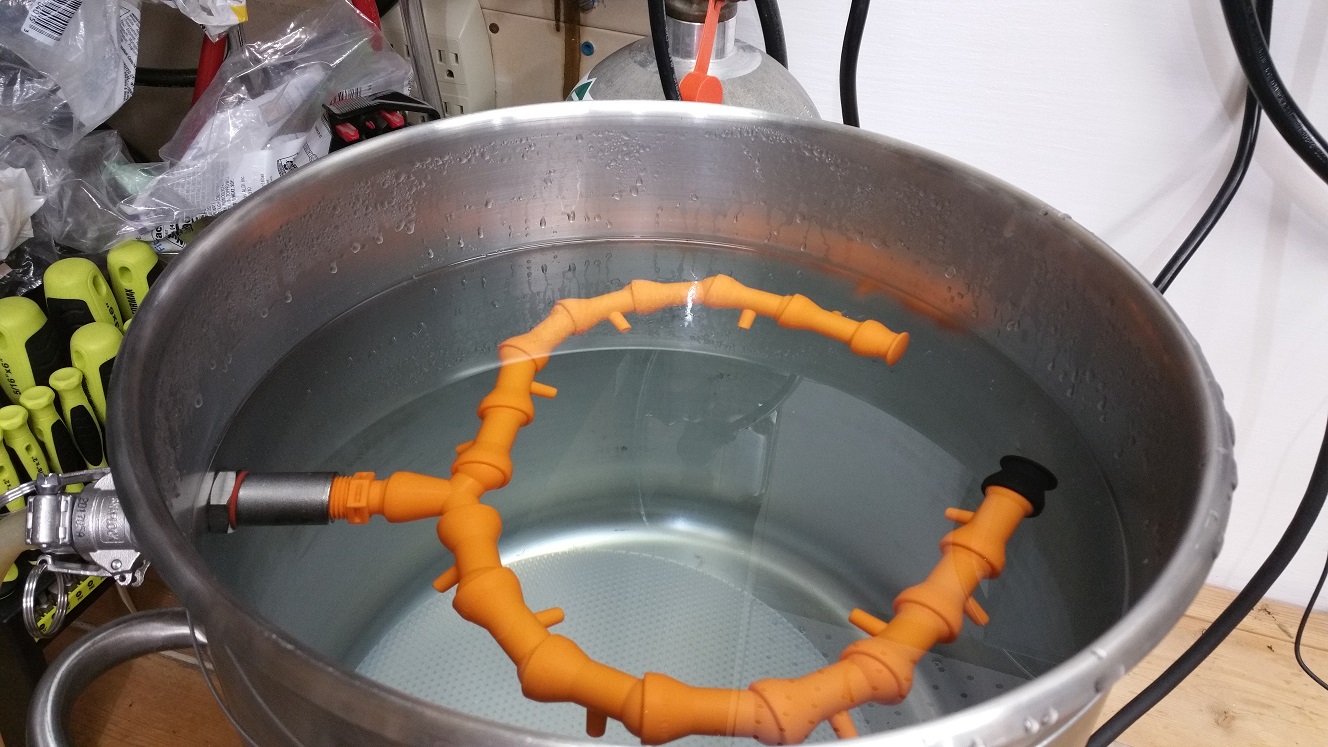Implementing a RIMS system for mashing. A few questions for those doing this:
1. I see some with very long silicone hoses. Is that just a situation where the brewer accepts a certain amount of liquid loss in the hoses, and accounts for it?
2. What's the best way to orient the RIMS tube? I know some are horizontal, some vertical, and maybe the reason brewers pick one or the other is physical constraints of the setup. But is there a best way if one has no such constraints?
3. I did a test of the system and after pulling all the liquid out of the mash tun, I then drained the RIMS tube and tubing, ended up with about 12-13 ounces of liquid. I could, I suppose, just drain the wort into a cup and add to the boil...
Couple of pics attached showing where I'm at; the setup is a proof-of-concept setup, not permanent, so I can orient these things any way I want. Using a false bottom in the mash tun and a Locline return manifold.
Thanks for any insight you can provide as to your choices and why you did what you did.


1. I see some with very long silicone hoses. Is that just a situation where the brewer accepts a certain amount of liquid loss in the hoses, and accounts for it?
2. What's the best way to orient the RIMS tube? I know some are horizontal, some vertical, and maybe the reason brewers pick one or the other is physical constraints of the setup. But is there a best way if one has no such constraints?
3. I did a test of the system and after pulling all the liquid out of the mash tun, I then drained the RIMS tube and tubing, ended up with about 12-13 ounces of liquid. I could, I suppose, just drain the wort into a cup and add to the boil...
Couple of pics attached showing where I'm at; the setup is a proof-of-concept setup, not permanent, so I can orient these things any way I want. Using a false bottom in the mash tun and a Locline return manifold.
Thanks for any insight you can provide as to your choices and why you did what you did.


Last edited:

















































![Craft A Brew - Safale S-04 Dry Yeast - Fermentis - English Ale Dry Yeast - For English and American Ales and Hard Apple Ciders - Ingredients for Home Brewing - Beer Making Supplies - [1 Pack]](https://m.media-amazon.com/images/I/41fVGNh6JfL._SL500_.jpg)







